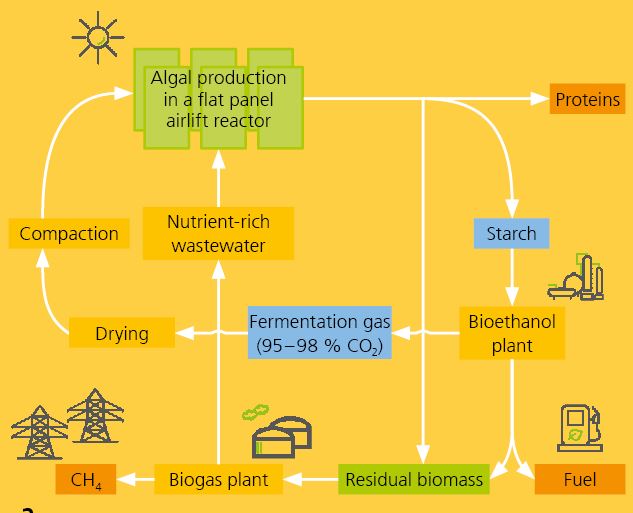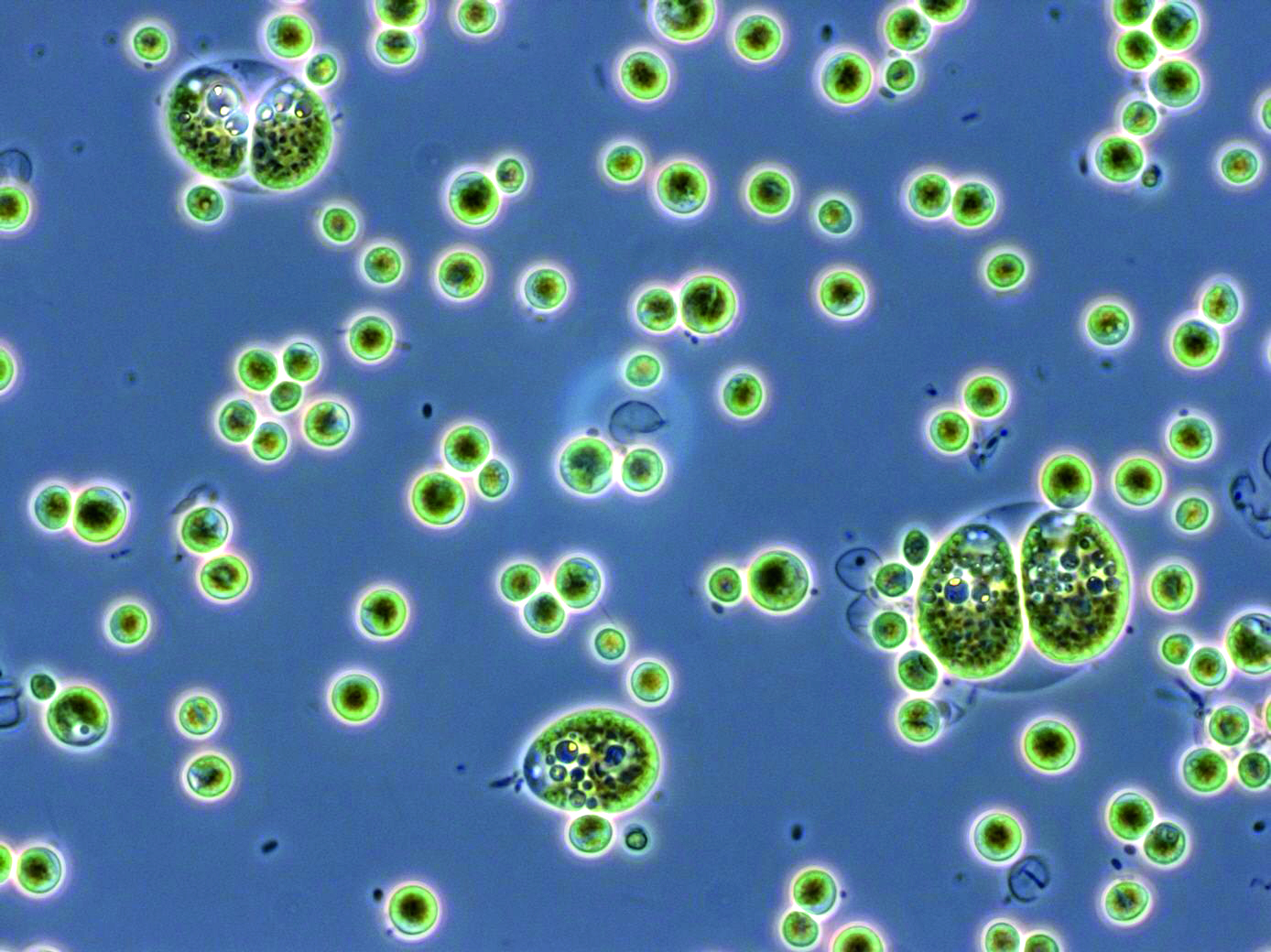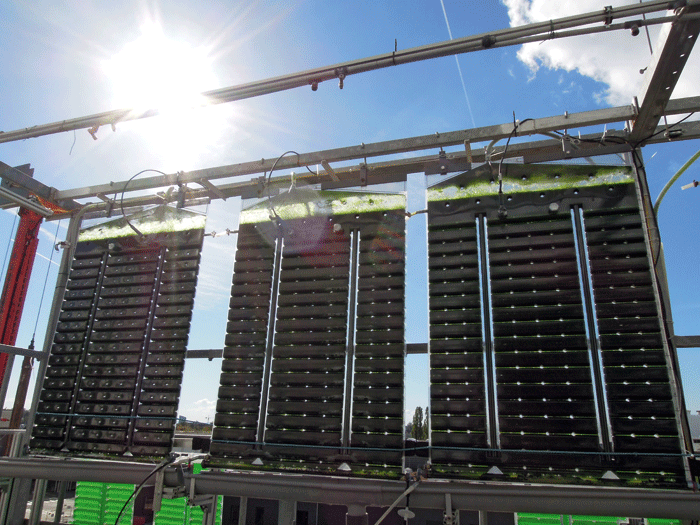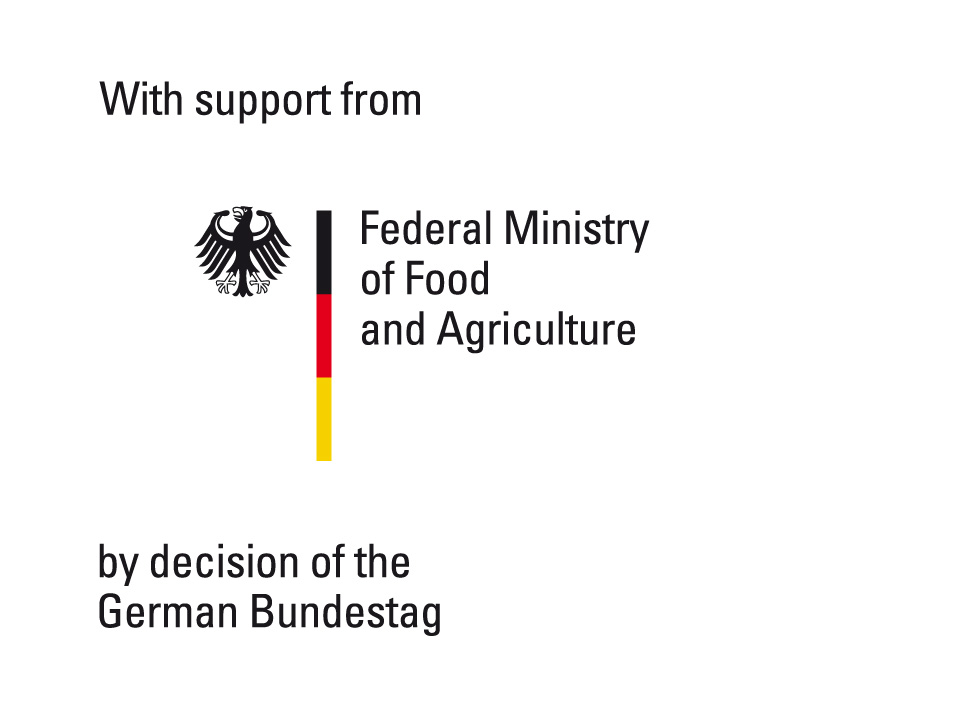Outdoor production of starch-rich algal biomass
In order to produce algal biomass suitable for biofuel production, the process has to be transferred to outdoor cultivation conditions using natural sunlight. The challenge is to establish a process that will operate in a stable manner and produce starch-rich biomass even under the variable light and temperature conditions of the natural day-night cycle. We utilized a test facility with five south-facing 28-liter flat panel airlift reactors to characterize the starch production process using the microalga Chlorella sorokiniana.
Increasing the starch content in laboratory and outdoor cultivation
Laboratory and outdoor cultivation experiments have shown that depriving the culture of nitrogen results in an increase in starch content in microalgal cells. In lab experiments, a starch content of 50 percent was reached within two days of nutrient depleted cultivation of the algae. Light availability per gram biomass was hereby a key variable influencing the rate of starch production. This variable can be easily adjusted in the laboratory, but to investigate different levels of light availability in an outdoor setting three reactors with differing cell concentrations are required. Hence, each reactor operates under a different quantity of light per gram of biomass. In this way, the starch content of Chlorella sorokiniana increased to 50 percent of dry weight in the outdoor setting as well, but the process required 7 to 8 days due to recurrent day-night rhythm and changing weather conditions resulting in variable process temperatures and light intensities compared to laboratory tests.
Outlook
A pilot algae facility with a volume of 4.3 m3 was constructed on the site of a bioethanol plant at CropEnergies in Zeitz in cooperation with project partner Subitec. The system involves 24 reactors each with 180 liters and will be used for a pilot scale starch production process. Industry partner Südzucker is responsible for the preparation of the biomass and fermentation of the algal starch to ethanol, as well as extraction of the protein fraction. In the upcoming year, we plan to use the liquid effluent of digested fermentation mash and algae residues as ammonium- and phosphate-rich nutrient source for cultivating the algae.
 Fraunhofer Institute for Interfacial Engineering and Biotechnology IGB
Fraunhofer Institute for Interfacial Engineering and Biotechnology IGB


